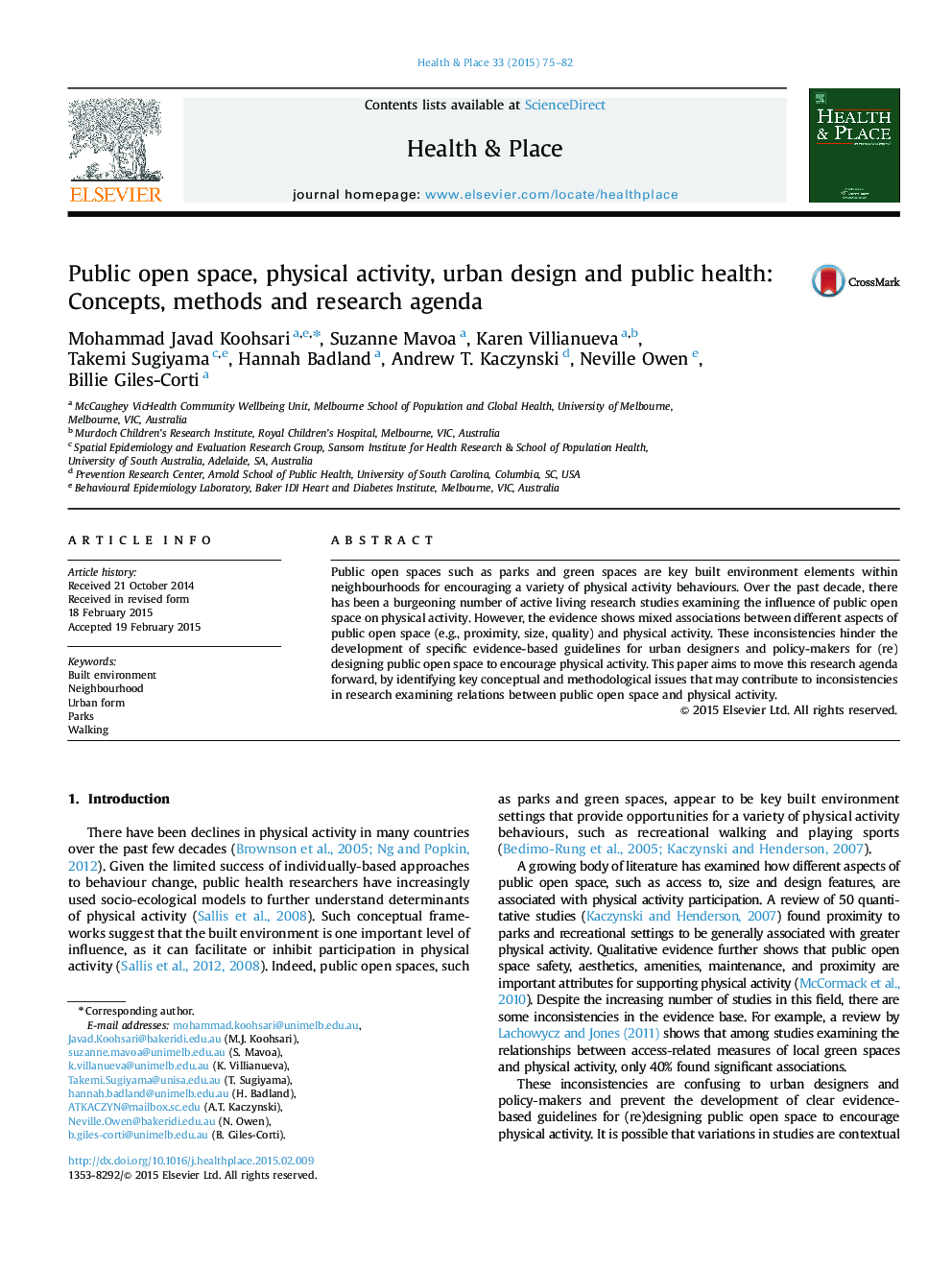| Article ID | Journal | Published Year | Pages | File Type |
|---|---|---|---|---|
| 7458130 | Health & Place | 2015 | 8 Pages |
Abstract
Public open spaces such as parks and green spaces are key built environment elements within neighbourhoods for encouraging a variety of physical activity behaviours. Over the past decade, there has been a burgeoning number of active living research studies examining the influence of public open space on physical activity. However, the evidence shows mixed associations between different aspects of public open space (e.g., proximity, size, quality) and physical activity. These inconsistencies hinder the development of specific evidence-based guidelines for urban designers and policy-makers for (re)designing public open space to encourage physical activity. This paper aims to move this research agenda forward, by identifying key conceptual and methodological issues that may contribute to inconsistencies in research examining relations between public open space and physical activity.
Related Topics
Health Sciences
Medicine and Dentistry
Public Health and Health Policy
Authors
Mohammad Javad Koohsari, Suzanne Mavoa, Karen Villanueva, Takemi Sugiyama, Hannah Badland, Andrew T. Kaczynski, Neville Owen, Billie Giles-Corti,
